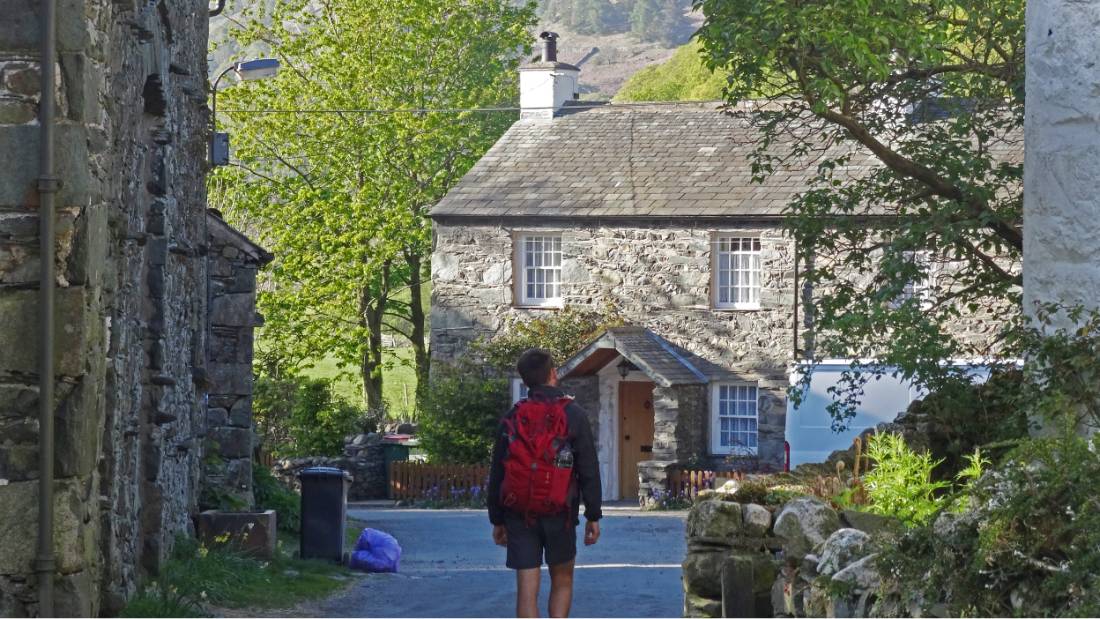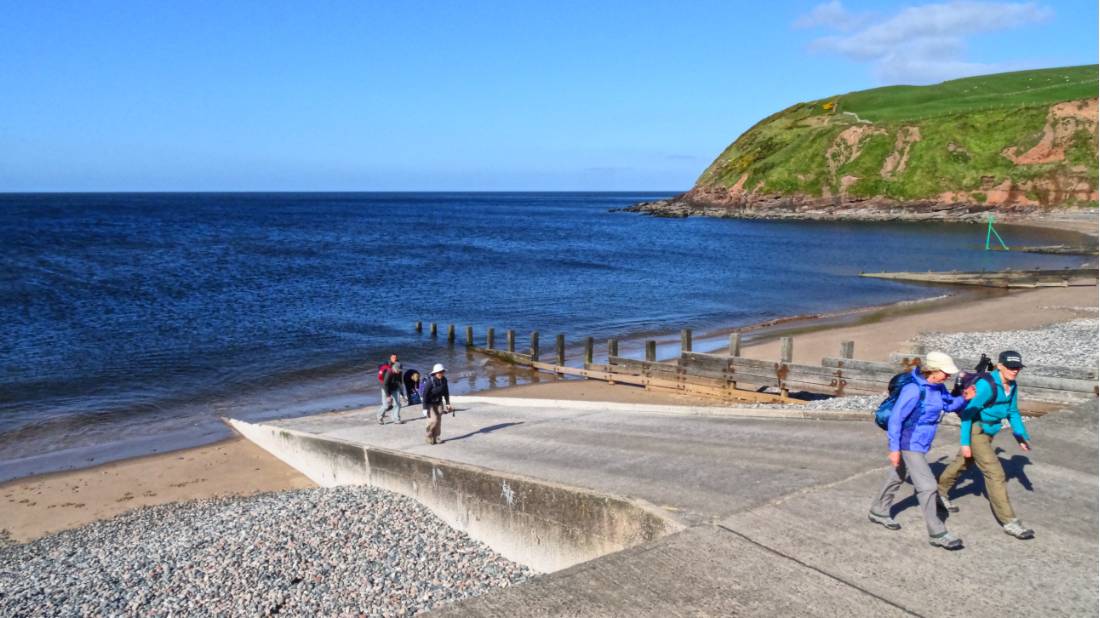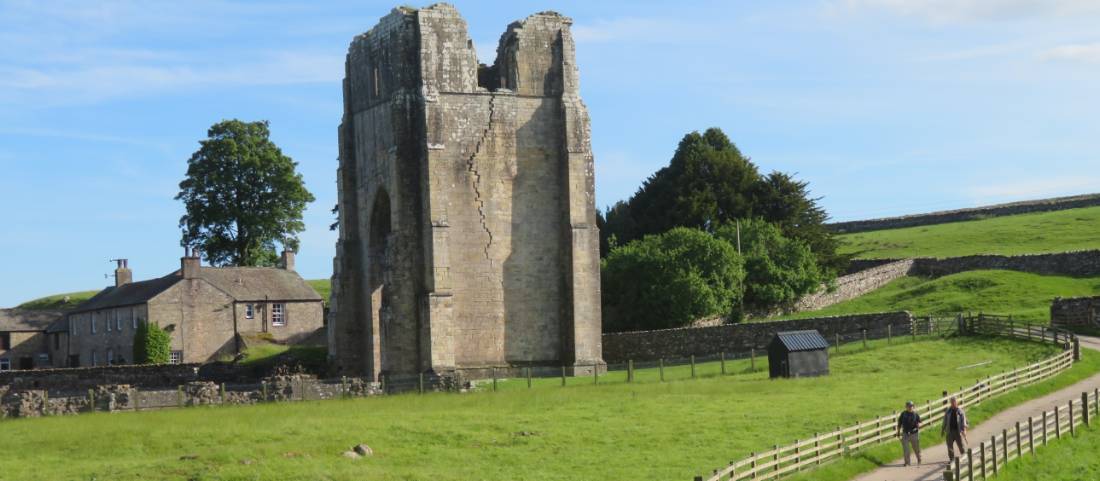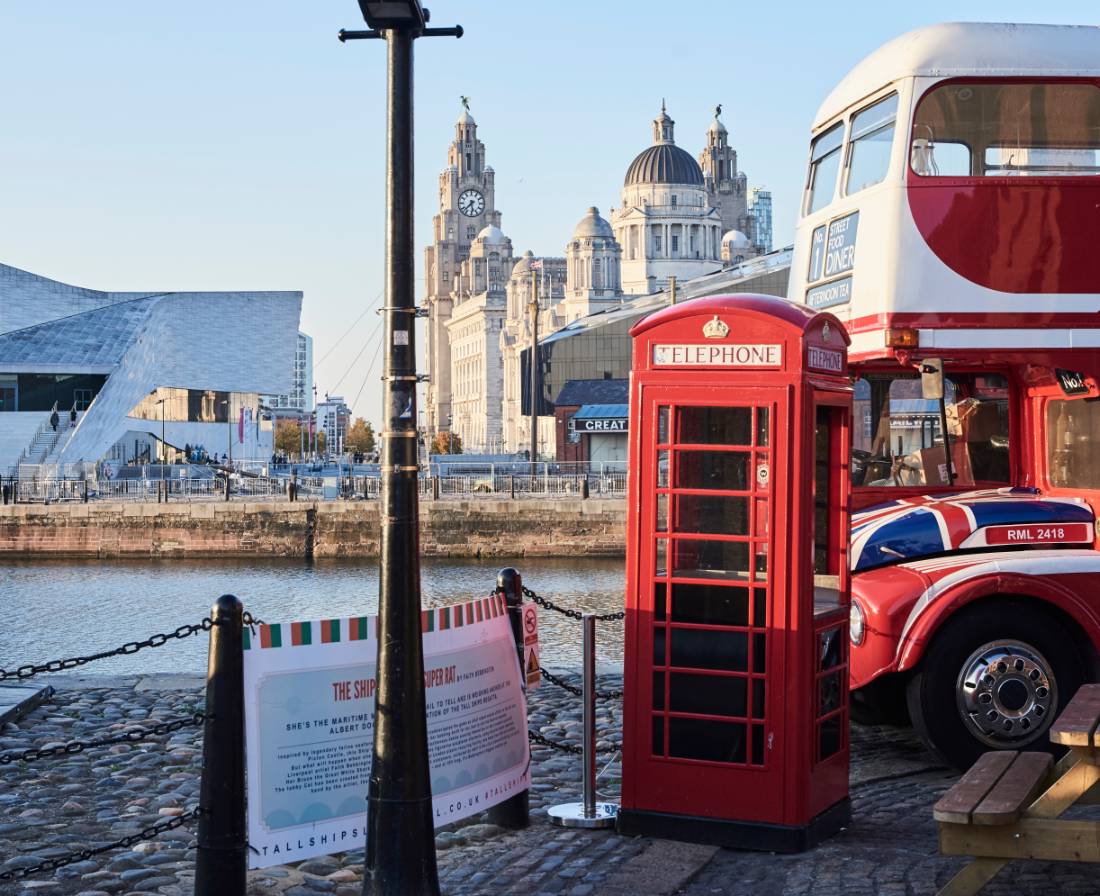While this wilder side of England with its hills – small in stature as they are when compared to the likes of the Himalayas or the Swiss Alps, it still offers endless spades of beauty and charm along its 190-plus miles trail.
Exploring three of the UK’s national parks, the route boasts spectacular mountain scenes, rugged moors, rolling hills and captivating coastal scenes, all whilst taking a deep dive into quintessential English culture. From climbing iconic fells to wandering down maze-like country lanes, resting weary feet in cosy bed and breakfasts to sampling authentic pubs and pints, the Coast to Coast route delivers on every account.
The beauty of the C2C trail is that you can experience it in bite-sized glory or go all-out on an epic holiday between 15 to 18 days. There are plenty of added values when travelling with Walkers' Britain, like going pack-free on a range of affordable self-guided holidays and guided small group trips.
Read on for our ultimate guide to one of Britain's most iconic national trails, answering the most frequently asked questions about the walk.
Across the 20th century, as outdoor pursuits into nature suddenly became sought out in the face of war and constant industrialisation, few embraced this new escape as much as Alfred Wainwright. Walker, author and illustrator, his name is now synonymous with English hillwalking, and his seven pictorial guides to the Lake District are a must for any curious walker.
Endlessly curious, whilst he spent much of his time walking and drawing the Lakeland fells, the day came when he set out east, drawn by the allure of walking from sea to sea. By 1973, he had created and published a brand new guide, detailing the now famous Coast to Coast route in a suggested 12 stages.
Known as a profound soul who cared deeply about the places he described, as well as one who found solace in the company of the hills, Wainwright was in many ways ahead of his time. This is only shown further by the fact the Coast to Coast route he proposed was technically illegal when he first suggested it, as it had to cross through private property. Uproar ensued until the right to roam was established in 2000, confirming the general public's right to access certain public or privately owned land, lakes, and rivers for recreational purposes.

Wainwright saw something that most at the time didn’t - that the UK’s natural journeys should be open to all. It took 25 years, but his Coast to Coast route was now officially possible. Fast forward again to 2022, when the route became one of the recognised national trails of the UK, and it’s clear to see this iconic journey is something truly worth seeing.
How far is the Coast to Coast route and how long does it take?
The Coast to Coast starts from St Bees in Cumbria on the west coast and finishes at Robin Hood’s Bay on the Heritage Coast of the North Walk Moors. The walk is a good distance at 192.2 miles (309.3km) long – and offers a serious challenge with 6,077, (19,933ft) of ascent.
Typically it’s completed over roughly 2 weeks (self-guided or with a guide and small group), though there are variations possible where you can complete it in segments or 18-day ramblers too.
Whilst there’s something special about completing the entire route, crossing the width of an entire country on foot, there are definitely highlights, which means it’s more than possible to enjoy some of the best bits by completing just a portion of the route from the west coast too.
Walkers can choose either direction to complete the journey in, but we recommend west to east. Not only will you be following in Wainwright’s footsteps, who intended the route to be walked this way, but you’ll get the serious ascent and descent of the Lakeland fells out of the way early on while you’re fresh too. You might even take advantage of the weather, as prevailing winds from the Atlantic give you a helping hand on your way east.
Where do you stop along the Coast to Coast?
The journey begins in St Bees, a stunning little coastal gem on the northwest coast. To commemorate the beginning of this epic journey, walkers dip their hands or wet their boots in the Irish Sea, pick up a stone to drop in Robin Hood's Bay and stop by the famous C to C monument found by the lifeboat station.

From there, cliffside tracks and paths through fields ease you in before you the fells start in earnest. Travelling through green foothills, the path heads through Ennerdale, one of the UK’s most beautiful and quiet valleys, before crossing over Wainwright’s favourite hill, Haystacks. This section in the Lake District is definitely the hardest of the trek, but it’s also one of the most beautiful too. The route takes low-level paths through the region’s most iconic fells, with options to reach the summits for the keenest hillwalkers.
Through Borrowdale, Grasmere and then under Helvellyn, the route brings you to Patterdale and then to the high village of Shap via a few more steep ascents and descents - and a beautiful walk along the shores of Haweswater too. Here the landscape changes, from the peaks of the Lake District to the dramatic limestone plateau of Westmoreland.

Dramatic moors and vast landscapes now sweep you up and over to the picturesque green troughs of the Yorkshire Dales. Entering Swaledale, the ascent and descent eases off as pastoral green countryside takes over. Grazing sheep and beautiful market towns are plentiful here, as you pass through Reeth and Richmond, before heading into the North York Moors.
A final challenge of the Cleveland hills followed by a warren of woodland paths, old coach roads and moors deliver you finally to the charismatic east coast, and your final destination in Robin Hood’s Bay. Reach the sea, nod your head to the plaque that commemorates the route's end – then quickly head into the Bay Hotel pub for your well-earned finishing brew.
How far will I walk per day on the Coast to Coast walk?
The distance you walk each day will vary based on your chosen itinerary. On average, the shortest day involves about 11 miles and takes approximately 4 hours, while the longest stretches to 24 miles, requiring around 9 hours.
If you prefer a more relaxed pace, our extended 18-day Coast to Coast itineraries feature shorter daily walks. Alternatively, we offer faster itineraries for those looking to complete the route at a more challenging pace, as well as routes that focus solely on the Coast to Coast highlights, giving you flexibility in crafting your experience.
How hard is the Coast to Coast Trail?
The Coast to Coast is a respectable challenge, with any walker attempting it needing to take into consideration the ascent and descent that comes with the Lake District hills.
It’s full of variety however – expect a combination of stunning mountain trails, weaving up and down Lakeland fells, moorland tracks, pastoral paths through fields of rolling hills, wandering country lanes and tree-covered bridleways. This means there are paths all the way and it’s more than possible for most walkers, but the sections through both the Lake District simply mean you’ll want to be prepared for some decent ascent and descent along the way.
The other challenging factor is the weather. Naturally, being in the UK, you can expect a chance of rain and some exposure to the elements in the higher-altitude areas. But, it’s nothing you won’t be able to deal with, especially knowing that at your accommodation you’ll be welcomed by owners used to muddy boots and soggy raincoats in desperate need of a drying room.
How do I train for the Coast to Coast walk?
We recommend starting your training at least three months before your journey to ensure you're fully prepared. You can:
- Incorporate more walking into your daily routine by walking to work, the bus, or during your lunch break - as much as you can.
- Gradually increase the distance and difficulty until you can comfortably cover 12 km in one day (while also breaking in your walking boots).
- Make sure to practice walking on varied terrains like rocky paths, hills, gravel, and cement.
- Practice walking with a backpack or rucksack to get used to its weight and fit.
- Aim to complete long-distance walks on consecutive days.
Before you leave, we recommend completing at least one walk that matches the average daily distance of your chosen itinerary. This will vary but tends to range typically between 12-22 km. With the right preparation, you'll be ready to embark with confidence and enjoy every step.
What is the food and drink like on the trail?
Everything from hearty pub grub to modern fine dining can be found along the route, with plenty of choices as you go. As you’ll pass through so many unique places in the UK though, look out for the regional delicacies you’ll find along the way. Compare fish and chips from both coasts at the start and the finish; visit the famous Grasmere gingerbread shop and stock up on spiced gingerbread and Kendal Mint Cake to fuel your hikes; look out for pubs that use the famous Swaledale Butchers for some local beef, lamb or game; and of course, sample beers from independent breweries all across the north.
What do I need for the Coast to Coast walk?
While your baggage will be transferred, alleviating much of the weight you carry, be sure to pack the following essentials:
- Comfortable walking boots: Make sure they are well worn in to keep your feet comfortable during your long-distance trip.
- Rucksack: A 35-50 litre rucksack is typically sufficient. Consider a waterproof cover, as many backpacks are not inherently waterproof.
- Camera: While a phone often suffices, capturing the scenery will create lasting memories to take home.
- Gaiters: Protect your feet on wet days and keep water and debris out of your boots.
- Water bottle or bladder.
- Sunscreen, sunglasses, and a hat. Staying sun-safe is incredibly important, especially if you are walking during the summer months.
- Waterproof phone case.
Optional:
- Walking Pole: Provides extra support on uneven surfaces.
- A power bank for your phone may also come in handy if you are travelling self guided.
What season is best to walk the Coast to Coast?
The Coast to Coast route offers a unique experience in every season, each with its own charm, allowing you to tailor your adventure to the landscapes you love most.
Spring (March - May): As the weather warms up without becoming too hot, spring brings vibrant green scenery and wildflowers in full bloom, creating a picturesque backdrop for your journey.
Summer (June - August): Enjoy long sunny days and lush green landscapes. With plenty of stops along the way, you can pause to rest and unwind at scenic spots or in charming bed and breakfasts.
Autumn (September - November): The trails become quieter, and the landscape transforms into a rich palette of autumnal browns and oranges. With drier weather and less humidity, the clear conditions are perfect for comfortable walking with stunning views.
You can walk the Coast to Coast
guided or
self-guided, allowing you to explore the route during your preferred time of year.
Before spending days in the rural countryside, it’s ideal to enjoy a city break first - especially one you can warm up for your walk with by exploring on foot. It’s a simple matter to get to your starting point in Cumbria via one of the west coast of England’s most fascinating cities: Liverpool.
Thanks to a recent period of committed urban regeneration, Liverpool has fast become an iconic place to enjoy a day – and night – out in the UK. A revamped waterfront, architecture dripping with industrial chic, an astounding variety of shops and restaurants and some famously friendly locals will make sure you’ll remember your visit.

Visit Albert Dock, and, after a coffee overlooking the water, choose from any of these iconic institutions to fill your morning: the Tate Liverpool, the Maritime Museum or the International Slavery Museum. It’s here you’ll get your first taste of Liverpool’s Beatles heritage too, learning about their humble beginnings through the award-winning museum, The Beatles Story.
Round your day off by a visit to Liverpool Cathedral to gain an insight even further into the past, before your evening begins. There’s plenty to choose from for your evening meal, from top-rated Turkish cuisine to trendy gastro-pubs, which thrive on local ingredients. And at the end of the day, a cocktail or two on the waterfront rounds off your Liverpool experience perfectly.
England’s Coast to Coast has clearly earned its famed place as one of the best long-distance walks in the world. Encompassing some of the finest sights and experiences the UK has to offer, it’s a challenge that comes with a guarantee it’ll be more than worth the effort.
There are plenty of added values when travelling with Walkers' Britain, like going pack-free on a range of affordable self-guided holidays and small group guided trips.